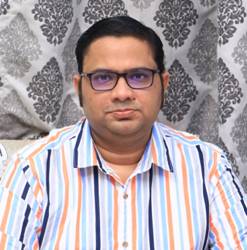Ministry of Science & Technology
SwarnaJayanti Fellow to work on Metal CO2 battery which can reduce payload mass & launch costs of planetary missions
Prof Chandra Shekhar Sharma, from IIT Hyderabad recently demonstrated the technical feasibility of Lithium- CO2 battery in simulated Mars atmosphere for the first time, patent filed for the technology
प्रविष्टि तिथि:
17 DEC 2020 11:18AM by PIB Delhi
India's planetary missions like Mars Mission may soon be able to reduce payload mass and launch costs with the help of an indigenously developed Metal- CO2 battery with CO2 as an Energy Carrier.
Chandra Shekhar Sharma, Associate Professor from Department of Chemical Engineering, IIT Hyderabad and a recipient of this year’s SwarnaJayanti fellowship instituted by the Department of Science & Technology (DST), Government of India, will be working to develop Scientific Understanding and Technical Development of Metal- CO2 battery with CO2 as an Energy Carrier for India's Mars Mission.
Prof Sharma recently demonstrated the technical feasibility of Lithium- CO2 battery in simulated Mars atmosphere for the first time. This study was published in the journal Elsevier’s Materials Letters, and an Indian patent has been filed for it. As a part of the SwarnaJayanti Fellowship, he aims to develop a working prototype of Metal (M)-CO2 battery technology and explore the feasibility of this technology in the Mars mission, particularly for the surface landers and rovers by using the CO2 gas which is abundantly available in its atmosphere. The development of Metal-CO2 batteries will provide highly specific energy density with the reduction in mass and volume, which will reduce payload mass and launch cost of planetary missions.
Another parallel aspect of this research is to develop Metal-CO2 battery technology also as a promising clean strategy for restraining the climate effects of CO2 emissions. Metal-CO2 batteries have a great potential to offer significantly high energy density than the currently used Li-ion batteries and provide a useful solution to fix CO2 emissions, which is better than energy-intensive traditional CO2 fixation methods.

[For more details, contact Prof. Chandra Shekhar Sharma (cssharma@che.iith.ac.in).]
******
NB/KGS/(DST Media Cell)
(रिलीज़ आईडी: 1681335)
आगंतुक पटल : 1049